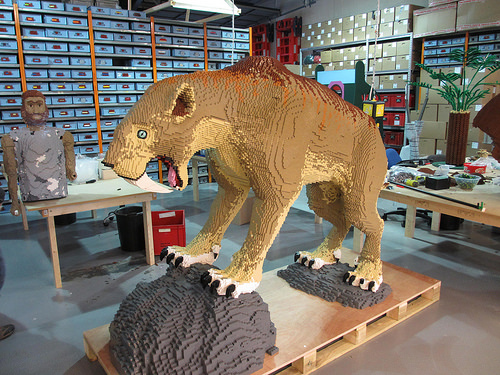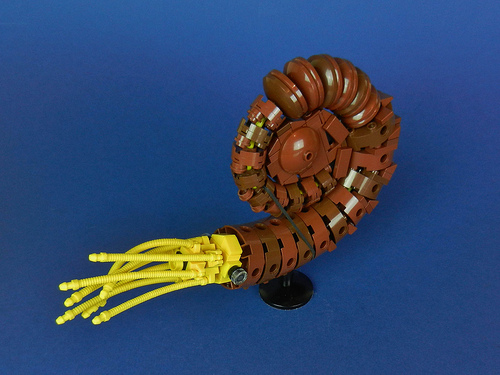Building with LEGO professionally may sound like a dream job to many of us. Recently, whilst I was in the UK for Brighton Modelworld I caught up with Ed Diment (Lego Monster), who gave up his job as a management consultant more than two years ago to partner up with Duncan Titchmarsh, who is the UK’s sole Lego Certified Professional. Together they run Bright Bricks.
We talked about being a professional LEGO-builder and discussed their latest event. From the 26th of February to the 27th of April, the Milestones Museum in Basingstoke (UK) hosts the Lost World Zoo. Bright Bricks and various members of the UK’s LEGO community that were drawn in for this, built dozens of models of prehistoric creatures and plants, that are now on display in the museum. They were finishing the models for this during my visit and I lent a hand working on a 4 meter tall model of a Moa, which is an extinct New Zealand walking bird. They also built a massive sabre tooth tiger, which I photographed in the company workshop.

Two more smaller examples are the ammonite by Tim Goddard (Rogue Bantha and a sabre toothed squirrel, built by Joe Perez (Mortalswordsman).


Visitors to the museum can also take part in activities, such as building a life-size woolly mammoth out of LEGO bricks. Yes, you did read that right: life-size. These guys like to do things big.
The company has been steadily growing. It currently employs about a dozen people working full-time, as well as several more on a temporary basis. The growth has meant having to move several times, because space in the workshop kept running out. They’re now based in a large unit on an industrial estate in Hampshire. Even though this is probably larger than all their previous workshops combined, the number of people, the large builds and the vast numbers of parts that they have in stock means that it can still be pretty difficult to move around in. The growth has also come with an increased amount of red tape. For instance, UK law requires a company of a given size to have an environmental policy and a health and safety policy, that includes having to find out how much heat is produced by a vast quantity of LEGO going up in flames. Ed probably spends more time on this and on dealing with clients and the media than he does on building. He still builds a lot, though, and with a seemingly endless supply of bricks. According to Ed, his current job is not as much fun as building AFOL models all day, but it is still definitely more fun than a regular job. Having spent a day putting more bricks together than I normally do in about a month, I can believe him (although I was still happy to go back to my day job).
If you’re in the South of the UK, I highly recommend that go check out the Lost World Zoo.
The Brothers Brick is funded by our readers and the community. Articles may include affiliate links, and when you purchase products from those links, TBB may earn a commission that helps support the site.















